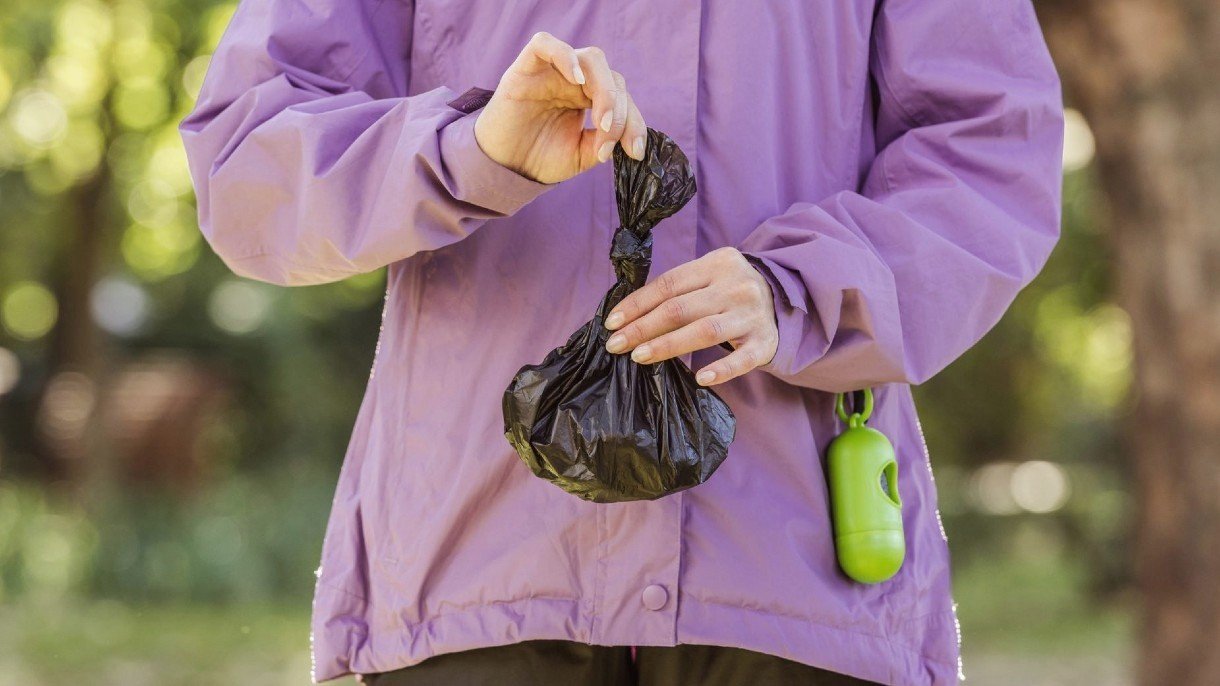Can Biodegradable Dog Poop Bags Degrade in a Landfill?

When buying biodegradable dog poop bags, the primary reason to buy them is to be environmentally friendly.
While dog poop itself might not always be so eco-friendly, it’s important for many pet owners to reduce their carbon footprint and reduce the amount of plastic clogging up our planet.
Biodegradable dog poop bags come in several varieties: biodegradable, compostable, and oxo-biodegradable. Often these terms get used interchangeably but they all fall under the umbrella of “biodegradable”.
With a biodegradable product, you expect them to break down wherever they’re placed, even landfills.
How does biodegradation work?
Almost anything is biodegradable – even plastic. But the amount of time it takes to degrade varies greatly.
It’s estimated that plastic bags take between 10 to 100 years to degrade in a landfill. Other materials might take only a few weeks while others take centuries. Biodegradability involves several factors and needs the right conditions, but it also varies between different materials.
Biodegradation is the most natural form of recycling. It involves breaking down something into its material parts. This is done by microorganisms, usually when in water or soil. Factors determine the rate of biodegradation, including light, water, oxygen, and temperature.
To biodegrade, a dog poop bag needs to have the right conditions for degradation, and the four factors above are the most essential. They need light, water, oxygen, and the right level of temperature so organisms can break them down.
The best biodegradable dog poop bags are compostable and made out of vegetable matter such as corn starch, but other bags may be made from biodegradable polymers. These are seen as more environmentally friendly because they’ve been designed to replace plastic. This doesn’t make them suitable for landfill degradation though.
A 2018 review into biodegradable polymers states that “biodegradation tests carried out in artificial environments lack transferability to real conditions and, therefore, highlight the necessity of environmentally authentic and relevant field‐testing conditions”. These materials need industrial processing to degrade properly, something landfills won’t help with.
Landfill mummification
One of the first words to come to mind when you think of “mummification” is “preserved”. There’s plenty of news about mummified people and animals being found by archaeologists or mummies entombed in Egypt.
Landfill mummification is similar. Every time more waste enters into a landfill, it ends up compacting other waste around and below it. The new waste blocks sunlight and oxygen from touching older waste, and as each layer is created, the lowest layer of waste is starved of light and oxygen. These two factors of biodegradation are removed. The waste is dried out and preserved, unable to degrade due to its mummification.
If you think about how small dog poop bags are generally, they often slip down the side of bins and end up at the bottom. This can happen in landfills and results in the otherwise biodegradable dog poop bags mummifying and being preserved for who knows long.
